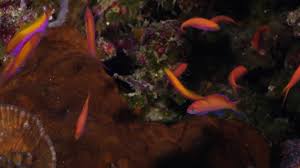Dragons, revered as symbols of power, fertility, and natural harmony, hold a prominent place in the folk beliefs of many ethnic minorities in China. While the Han majority sees the dragon as an emblem of imperial authority and cultural unity, the ethnic minorities of China have their own unique interpretations and practices surrounding this mythical creature. These beliefs are deeply intertwined with local traditions, natural environments, and spiritual values.

The Role of Dragons in Ethnic Minority Beliefs
For many of China’s ethnic minorities, dragons are not just mythical creatures but guardians of nature and mediators between humans and the spirit world. Unlike the imperial and celestial connotations often associated with dragons in Han culture, minority groups often view dragons as deeply connected to the land, water, and community well-being.
1. Protectors of Water and Agriculture
Many ethnic minorities live in regions where agriculture and fishing are central to their livelihoods. Dragons are believed to govern rivers, rainfall, and fertility, ensuring bountiful harvests and stable water sources. Rituals to honor the dragon are conducted to prevent droughts or floods, emphasizing their role as guardians of natural resources.
- The Zhuang People: In Guangxi Province, the Zhuang people regard dragons as water deities. Their traditional “Dragon Worship Festival” involves offerings to dragon spirits to ensure good harvests and plentiful fish stocks.
- The Dong People: The Dong ethnic group, known for their terraced rice fields, performs dragon dances during planting and harvesting seasons to invoke rain and ward off natural disasters.
2. Spiritual Intermediaries
Dragons are often seen as spiritual intermediaries in the beliefs of ethnic minorities. They connect humans with ancestors, deities, and the forces of nature. Ceremonial dances, songs, and storytelling are used to honor these connections.
- The Miao People: The Miao ethnic group in southern China incorporates dragon imagery into their textiles and jewelry. They believe dragons guide the spirits of the deceased to the afterlife and serve as protectors of ancestral heritage.
- The Yi People: Among the Yi people, dragon motifs appear in shamanistic rituals, symbolizing the power to bridge the human and spiritual realms.
Dragon Festivals Among Ethnic Minorities
Dragon-related festivals are a vibrant part of the cultural calendar for many ethnic groups, blending mythological reverence with community celebration.
1. Dragon Worship Festival of the Bai People
The Bai people of Yunnan Province celebrate a Dragon Worship Festival each spring. During this festival, villagers make offerings at dragon temples and perform traditional dances to honor the dragon’s role in controlling rainfall and protecting crops.
2. The Dragon Boat Festival Among Ethnic Groups
While the Dragon Boat Festival is widely celebrated across China, it takes on unique forms in ethnic minority regions. For example:
- In Guizhou Province, the Tujia people integrate local legends into the festival, emphasizing dragons as protectors of rivers and forests.
- The Dai people of Yunnan use the festival to honor dragon spirits associated with the Mekong River, which sustains their communities.
Dragon Symbols in Ethnic Minority Art and Architecture
Dragons are a recurring theme in the art and architecture of China’s ethnic minorities. Unlike the imperial golden dragons of Han culture, these representations are more earthy and reflect local styles and beliefs.
- The Naxi People: In Lijiang, the Naxi people’s traditional Dongba scripts and murals often depict dragons as colorful, multi-headed beings. These dragons are seen as protectors of the sacred Jade Dragon Snow Mountain.
- The Tibetan People: In Tibetan Buddhism, dragons are associated with wisdom and protection. Dragon motifs can be found in temple murals, prayer flags, and thangka paintings, symbolizing the strength to overcome adversity.
- The Shui People: The Shui ethnic group incorporates dragon imagery into their bronze drums and ceremonial artifacts. These dragons often have aquatic features, reflecting their connection to rivers and fishery traditions.
The Mythological Diversity of Dragons
China’s ethnic minorities have unique dragon legends that differ from the traditional Han narrative. These stories highlight the adaptability of dragon mythology in reflecting local environments and values.
- The Hani People: In Yunnan, the Hani people tell tales of a dragon king who descended from the heavens to teach their ancestors how to cultivate rice terraces, symbolizing the harmony between humans and nature.
- The Li People: On Hainan Island, the Li ethnic group tells stories of sea dragons that protect fishermen and guide them through storms. These dragons are often depicted with fish-like tails and fins.
- The Manchu People: In northeastern China, the Manchu people associate dragons with the sacred Changbai Mountains. Legends describe dragons as guardians of the region’s forests and rivers, ensuring balance in the ecosystem.
Conclusion
Dragons in the folk beliefs of China’s ethnic minorities reflect the diversity and richness of the nation’s cultural tapestry. For these communities, dragons are more than mythical beings—they are guardians of nature, symbols of ancestral wisdom, and spiritual intermediaries. Through festivals, art, and storytelling, these traditions continue to celebrate the dragon’s enduring presence in their lives, offering a profound connection to the land, water, and spiritual realms. As China embraces its cultural diversity, these dragon legends serve as a reminder of the shared heritage and unique perspectives of its many ethnic groups.










